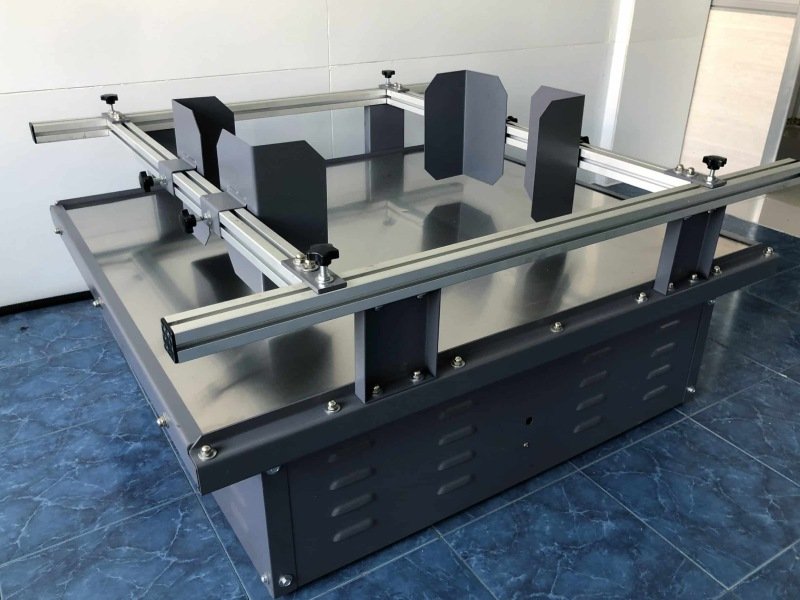Sourcing electrical latches from China has become an attractive option for businesses worldwide due to the country’s vast manufacturing capabilities, competitive pricing, and extensive supply chain networks. China dominates the global market for electronic components, producing a significant portion of the world’s electrical hardware, including latches used in automotive, industrial, and consumer applications. However, while the opportunities are plentiful, the process is fraught with potential pitfalls that can lead to delays, financial losses, or substandard products.
This article provides a comprehensive guide to navigating the complexities of sourcing electrical latches from China. With approximately 3,500 words, it covers key considerations such as supplier selection, quality control, communication challenges, legal and compliance issues, logistics, and risk mitigation strategies. By understanding and addressing these potential pitfalls, businesses can establish reliable partnerships and secure high-quality electrical latches at competitive prices.
Understanding Electrical Latches and Their Importance
Electrical latches are critical components in various systems, designed to secure or release mechanisms using electrical signals. They are widely used in automotive locking systems, industrial machinery, home appliances, and even aerospace applications. These devices must meet stringent standards for durability, precision, and electrical performance, making the sourcing process particularly sensitive.
China’s role as a manufacturing hub means that businesses can access a wide range of latch designs, from electromagnetic to solenoid-based models, often at lower costs than domestic suppliers. However, the stakes are high: a faulty latch can compromise safety, functionality, or compliance with industry regulations. Avoiding pitfalls begins with a clear understanding of your requirements and the risks involved in international sourcing.
Pitfall 1: Choosing the Wrong Supplier
The Risk
One of the most common mistakes when sourcing from China is selecting an unreliable supplier. The market is flooded with manufacturers, trading companies, and middlemen, not all of whom are equally capable or trustworthy. Some may misrepresent their production capabilities, while others might subcontract work to lower-quality factories without disclosure.
How to Avoid It
- Research Extensively: Use platforms like Alibaba, Made-in-China, or Global Sources to identify potential suppliers, but don’t stop there. Cross-check their credentials through independent reviews, industry forums, or trade associations.
- Verify Credentials: Request business licenses, ISO certifications (e.g., ISO 9001 for quality management), and proof of export experience. Legitimate suppliers will provide these readily.
- Assess Specialization: Ensure the supplier specializes in electrical latches or related components. General hardware manufacturers may lack the technical expertise needed for precision electrical parts.
- Start Small: Place a trial order to test their reliability before committing to large-scale purchases.
Pro Tip
Visit trade shows like the China Import and Export Fair (Canton Fair) or Electronica China to meet suppliers in person and evaluate their offerings firsthand.
Pitfall 2: Overlooking Quality Standards
The Risk
Quality inconsistencies are a major concern when sourcing from China. Electrical latches must adhere to specific tolerances, material standards, and electrical performance metrics. Without proper oversight, you might receive products that fail prematurely or don’t meet regulatory requirements (e.g., RoHS, CE, or UL certifications).
How to Avoid It
- Define Specifications Clearly: Provide detailed technical drawings, material requirements (e.g., stainless steel, brass), and performance criteria (e.g., voltage range, cycle durability) in writing.
- Request Samples: Test samples in real-world conditions before mass production. Check for mechanical strength, electrical conductivity, and environmental resistance (e.g., corrosion, temperature extremes).
- Implement Third-Party Inspections: Hire firms like SGS, Bureau Veritas, or Intertek to conduct pre-shipment inspections. They can verify quality against your standards.
- Negotiate Quality Agreements: Include clauses in your contract that specify penalties for non-compliance, such as rework or refunds.
Case Study
In 2023, a U.S.-based automotive supplier faced a recall after sourcing latches from a Chinese vendor that used substandard copper wiring, leading to short circuits. The issue could have been avoided with rigorous sample testing and on-site quality checks.
Pitfall 3: Communication Barriers
The Risk
Language differences and cultural misunderstandings can derail negotiations, specifications, or timelines. Miscommunication might result in incorrect product specifications, delayed responses, or unmet expectations.
How to Avoid It
- Use Clear, Simple Language: Avoid idioms or complex jargon in emails and contracts. Use diagrams or visuals to supplement written instructions.
- Hire a Translator or Agent: Employ a bilingual sourcing agent familiar with electrical components to bridge the gap.
- Leverage Technology: Use tools like WeChat (popular in China) for real-time communication, and confirm key points via email for documentation.
- Establish a Point of Contact: Work with a single, reliable representative at the supplier to streamline discussions.
Pro Tip
Schedule regular video calls to build rapport and clarify details—face-to-face interaction, even virtual, fosters trust.
Pitfall 4: Ignoring Intellectual Property (IP) Risks
The Risk
China has made strides in IP protection, but risks remain. Sharing proprietary latch designs without safeguards could lead to copycat products flooding the market, undermining your competitive edge.
How to Avoid It
- Sign a Non-Disclosure Agreement (NDA): Draft an NDA tailored to Chinese law, as Western agreements may not hold up in local courts. Consult a legal expert familiar with China.
- Use Modular Designs: Share only the necessary components of your design, keeping critical IP in-house.
- Patent Protection: Register your patents in China through the China National Intellectual Property Administration (CNIPA) before sourcing.
- Monitor the Market: Periodically search for knockoffs on platforms like Taobao or Alibaba and pursue legal action if needed.
Legal Insight
Under China’s 2021 Patent Law amendments, penalties for IP theft have increased, offering better recourse—but proactive prevention is still key.
Pitfall 5: Underestimating Logistics and Costs
The Risk
Hidden costs—such as shipping delays, customs duties, or unexpected taxes—can erode the cost savings of sourcing from China. Poor logistics planning might also lead to stockouts or damaged goods.
How to Avoid It
- Understand Incoterms: Clarify shipping terms (e.g., FOB, CIF, DDP) with your supplier to know who bears costs and risks at each stage.
- Factor in Duties: Research import tariffs for electrical latches in your country (e.g., U.S. Harmonized Tariff Schedule codes) and budget accordingly.
- Choose Reliable Freight Forwarders: Partner with experienced logistics providers who handle customs clearance and offer tracking.
- Plan for Lead Times: Account for production (4-8 weeks), shipping (2-6 weeks), and potential delays (e.g., Chinese New Year shutdowns in January/February).
Example
A European firm once saved 30% on latch costs but lost half its savings to expedited shipping fees after underestimating a holiday closure. Advanced planning could have avoided this.
Pitfall 6: Neglecting Compliance and Certifications
The Risk
Electrical latches often require certifications like RoHS (Restriction of Hazardous Substances), CE (Conformité Européenne), or UL (Underwriters Laboratories) to be sold legally in target markets. Non-compliant products can lead to fines, seized shipments, or reputational damage.
How to Avoid It
- Specify Compliance Needs Upfront: Inform suppliers of required certifications during initial negotiations.
- Request Documentation: Ask for test reports or certificates from accredited labs, not just supplier assurances.
- Validate Authenticity: Counterfeit certificates are a known issue—verify them with the issuing body if possible.
- Work with Compliance Experts: Engage consultants to ensure your latches meet local regulations.
Regulatory Note
As of April 2025, the EU has tightened RoHS standards for electrical components, adding new restricted substances—ensure your supplier is aware of updates.
Pitfall 7: Failing to Build Long-Term Relationships
The Risk
Treating suppliers as one-off vendors rather than partners can lead to inconsistent quality, poor communication, or lack of priority during high-demand periods.
How to Avoid It
- Invest in Relationships: Visit factories, meet key staff, and show commitment to a partnership.
- Negotiate Fairly: Avoid aggressive price haggling that strains trust—aim for a win-win deal.
- Provide Feedback: Share constructive input on samples or deliveries to improve collaboration.
- Plan for Scale: Discuss future orders to incentivize suppliers to prioritize your needs.
Benefit
A U.K. electronics firm reported a 20% reduction in defects after nurturing a five-year relationship with a Shenzhen-based latch manufacturer.
Pitfall 8: Skipping Due Diligence on Factory Conditions
The Risk
Unethical practices (e.g., poor labor conditions, environmental violations) at supplier factories can damage your brand if exposed. Additionally, unstable factories may collapse under financial or regulatory pressure, disrupting your supply chain.
How to Avoid It
- Conduct Factory Audits: Hire auditors to assess working conditions, environmental compliance, and financial health.
- Check Certifications: Look for SA8000 (social accountability) or ISO 14001 (environmental management) credentials.
- Monitor News: Search for reports of labor disputes or penalties linked to your supplier.
- Diversify Sources: Avoid over-reliance on a single factory by qualifying backup suppliers.
Ethical Consideration
Consumer demand for sustainable sourcing is rising—aligning with responsible suppliers enhances your market reputation.
Pitfall 9: Misjudging Payment Terms
The Risk
Unfavorable payment terms (e.g., 100% upfront) expose you to financial risk if the supplier underdelivers. Conversely, terms too strict for the supplier might discourage cooperation.
How to Avoid It
- Negotiate Balanced Terms: A common split is 30% deposit, 70% upon shipment, but adjust based on trust and order size.
- Use Secure Methods: Opt for escrow services (e.g., Alibaba Trade Assurance) or letters of credit to protect funds.
- Avoid Full Prepayment: Reserve this for trusted, long-term partners only.
- Monitor Currency Risks: Hedge against fluctuations in the Chinese Yuan (CNY) if paying in local currency.
Financial Tip
As of April 2025, CNY has stabilized post-pandemic, but global inflation may still impact pricing—lock in rates where possible.
Pitfall 10: Inadequate Risk Management
The Risk
External factors like geopolitical tensions, trade tariffs, or natural disasters (e.g., typhoons in China’s coastal manufacturing hubs) can disrupt supply chains unexpectedly.
How to Avoid It
- Diversify Suppliers: Source from multiple regions (e.g., Guangdong and Zhejiang) to spread risk.
- Build Buffer Stock: Maintain a safety inventory to cover delays.
- Stay Informed: Monitor U.S.-China trade relations or regional weather forecasts for potential disruptions.
- Draft Force Majeure Clauses: Include these in contracts to address unforeseen events legally.
Recent Context
The 2024 U.S. tariff hikes on Chinese electronics underscored the need for contingency plans—businesses with diversified sourcing weathered the storm better.
Conclusion
Sourcing electrical latches from China offers immense potential for cost savings and scalability, but it demands diligence, foresight, and strategic planning. By selecting reputable suppliers, enforcing quality standards, bridging communication gaps, protecting IP, managing logistics, ensuring compliance, fostering relationships, auditing factories, negotiating smartly, and preparing for risks, you can sidestep the most common pitfalls.
The key is to approach the process as a partnership rather than a transaction. Invest time upfront to vet suppliers and establish clear expectations, and you’ll reap the rewards of a reliable, high-quality supply chain. As global markets evolve, staying proactive and informed will keep your business ahead of the curve—whether you’re sourcing latches for a car door, a factory gate, or a household appliance.







